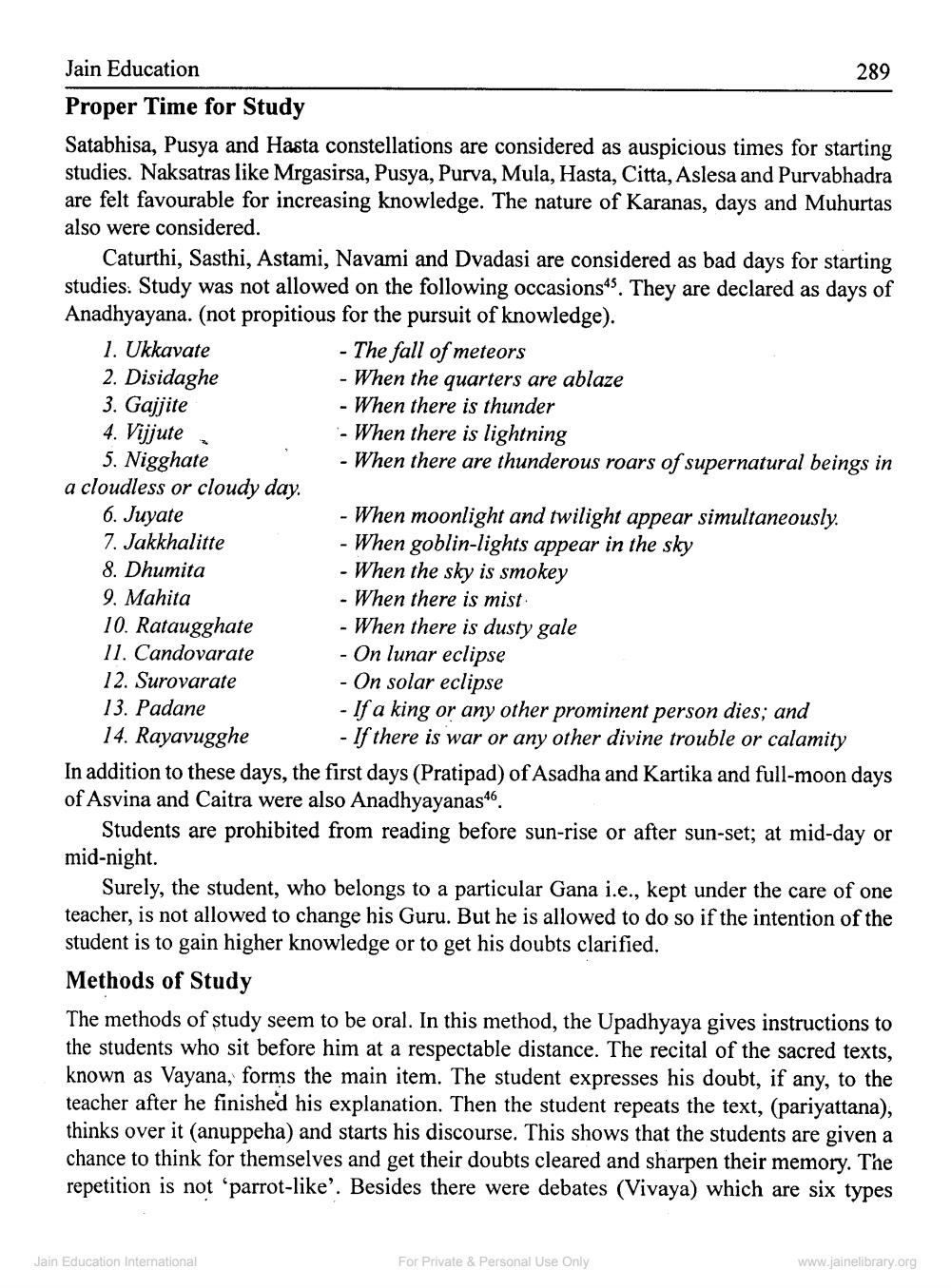________________
Jain Education
289 Proper Time for Study Satabhisa, Pusya and Hasta constellations are considered as auspicious times for starting studies. Naksatras like Mrgasirsa, Pusya, Purva, Mula, Hasta, Citta, Aslesa and Purvabhadra are felt favourable for increasing knowledge. The nature of Karanas, days and Muhurtas also were considered.
Caturthi, Sasthi, Astami, Navami and Dvadasi are considered as bad days for starting studies. Study was not allowed on the following occasions. They are declared as days of Anadhyayana. (not propitious for the pursuit of knowledge). 1. Ukkavate
- The fall of meteors 2. Disidaghe
- When the quarters are ablaze 3. Gajjite
- When there is thunder 4. Vijjute
- When there is lightning 5. Nigghate
- When there are thunderous roars of supernatural beings in a cloudless or cloudy day. 6. Juyate
- When moonlight and twilight appear simultaneously. 7. Jakkhalitte
- When goblin-lights appear in the sky 8. Dhumita
- When the sky is smokey 9. Mahita
- When there is mist 10. Rataugghate - When there is dusty gale 11. Candovarate - On lunar eclipse 12. Surovarate
- On solar eclipse 13. Padane
- If a king or any other prominent person dies; and 14. Rayavugghe - If there is war or any other divine trouble or calamity In addition to these days, the first days (Pratipad) of Asadha and Kartika and full-moon days of Asvina and Caitra were also Anadhyayanas46.
Students are prohibited from reading before sun-rise or after sun-set; at mid-day or mid-night.
Surely, the student, who belongs to a particular Gana i.e., kept under the care of one teacher, is not allowed to change his Guru. But he is allowed to do so if the intention of the student is to gain higher knowledge or to get his doubts clarified. Methods of Study The methods of study seem to be oral. In this method, the Upadhyaya gives instructions to the students who sit before him at a respectable distance. The recital of the sacred texts, known as Vayana, forms the main item. The student expresses his doubt, if any, to the teacher after he finished his explanation. Then the student repeats the text, (pariyattana), thinks over it (anuppeha) and starts his discourse. This shows that the students are given a chance to think for themselves and get their doubts cleared and sharpen their memory. The repetition is not 'parrot-like'. Besides there were debates (Vivaya) which are six types
46
Jain Education International
For Private & Personal Use Only
www.jainelibrary.org




